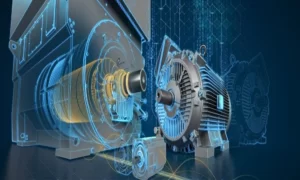
WHAT IS THE ELECTRIC MOTOR?
An electric motor is a device that converts electrical energy into mechanical energy. It consists of a rotor and a stator, which interact to produce rotary motion. Electric motors are used in a wide range of applications, from household appliances to industrial machinery. They are known for their efficiency and reliability, making them a key component in modern technology. The development of electric motors has played a significant role in the advancement of various industries.
TYPES OF ELECTRIC MOTORS
— Electric motors are a crucial component of modern technology, powering a wide range of devices and machinery. There are several different types of electric motors, each designed for specific applications and operating conditions. Understanding the characteristics and capabilities of these motor types is essential for selecting the right motor for a given task. Let’s take a closer look at some of the most common types of electric motors:
- DC Motors: Direct current (DC) motors are widely used in applications where speed control and torque regulation are essential. They operate using a constant voltage and produce a continuous rotation. DC motors are commonly found in household appliances, power tools, and automotive systems.
- AC Motors: Alternating current (AC) motors are another prevalent type of electric motor. They are known for their simplicity and reliability, making them suitable for a wide range of industrial and commercial applications. AC motors can be further categorized into subtypes such as synchronous motors, asynchronous (induction) motors, and brushless DC motors.
- Synchronous Motors: Synchronous motors operate at a constant speed determined by the frequency of the AC power supply. They are commonly used in applications that require precise speed control, such as in industrial machinery and synchronous clocks.
- Induction Motors: Induction motors are the most commonly used type of AC motor. They rely on electromagnetic induction to produce rotational motion. These motors are known for their robustness and low maintenance requirements, making them ideal for applications such as pumps, fans, and conveyor systems.
- Brushless DC Motors: Brushless DC (BLDC) motors offer high efficiency, low maintenance, and precise speed control. They are widely used in applications such as electric vehicles, drones, and industrial automation due to their compact size and high-power density.
- Stepper Motors: Stepper motors are designed to move in discrete steps, making them suitable for applications that require precise positioning control, such as 3D printers, CNC machines, and robotics.
- Servo Motors: Servo motors are known for their high precision and ability to provide precise control over position, velocity, and acceleration. They are commonly used in robotics, CNC machines, and other automated systems. Each type of electric motor has its unique characteristics and advantages, making it suitable for specific applications. When selecting an electric motor for a particular task, factors such as speed requirements, torque characteristics, size constraints, and control capabilities must be carefully considered to ensure optimal performance. In conclusion, the diverse range of electric motor types available today reflects the varied needs of modern industries and technologies.
By understanding the strengths and limitations of each motor type, engineers and designers can make informed decisions when selecting the most suitable motor for their specific application.


